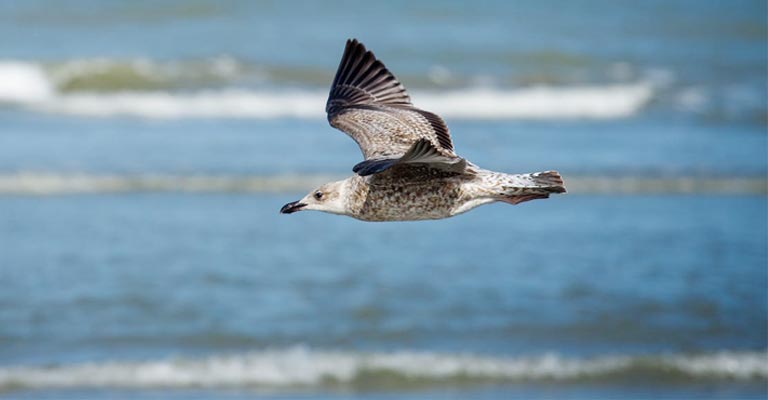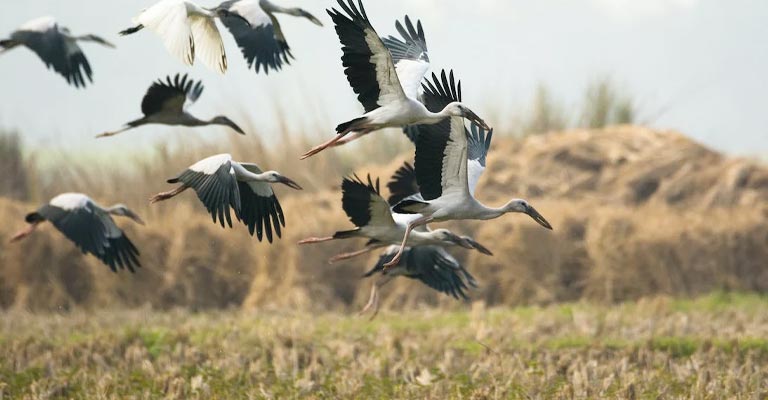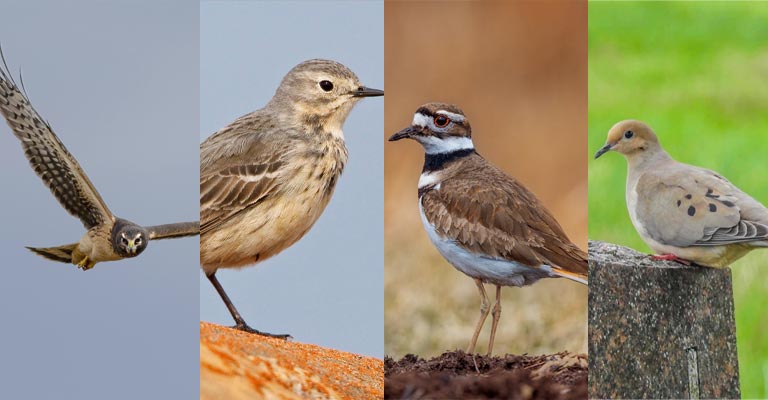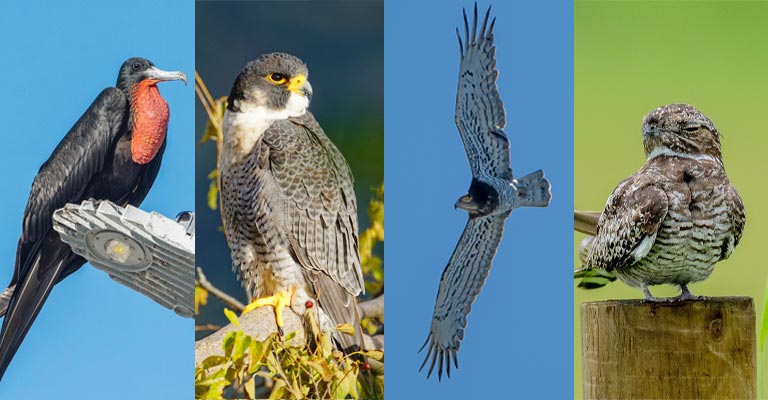The skies are a realm of boundless freedom for birds, but not all of them choose to soar at great heights. Some birds exhibit a preference for flying close to the ground, and this intriguing behavior raises questions about the reasons behind it.
The act of flying low to the ground is not a random choice; rather, it is a response to a combination of ecological, behavioral, and evolutionary factors that have shaped avian flight patterns.
In this exploration, we will uncover the compelling reasons why do birds fly low to the ground. From hunting and foraging near the earth’s surface to avoiding predators, engaging in courtship displays, and locating nesting sites, the motivations behind low-level flight are as diverse as the bird species themselves.
Understanding this behavior sheds light on the remarkable adaptability and survival strategies of our feathered friends in an ever-changing world.

Why Do Birds Fly Low To The Ground?
Birds fly at various altitudes based on their specific needs, habits, and environmental factors. Flying close to the ground is a behavior observed in many bird species, and there are several reasons behind this behavior:
Hunting and Foraging
Birds such as sparrows, robins, and thrushes often fly low to the ground to hunt for insects, worms, or seeds. Being closer to the ground provides them with better visibility and easy access to their prey.
Avoiding Predators
Flying close to the ground is a defensive tactic to avoid aerial predators. By hugging the terrain, birds can quickly dive into cover, such as bushes or tall grass, reducing the risk of being spotted and attacked by hawks or other raptors.
Navigation
Some migratory birds fly low to the ground as a navigational aid. Landmarks, scents, and other ground-level cues help them find their way during long-distance migrations, especially when visibility is poor due to fog or low cloud cover.
Territorial Displays
During the breeding season, male birds may perform low-level flights as part of their territorial displays. These flights help establish dominance and communicate boundaries to other males, particularly in open habitats like meadows.
Courtship Rituals
Certain bird species engage in elaborate courtship displays close to the ground. These displays, often involving intricate flight patterns, are designed to attract potential mates.
Performing these displays near the ground allows for better visibility and coordination.
Nesting Behavior
Birds flying low to the ground might be searching for suitable nesting sites. They scout the surroundings meticulously, inspecting trees, shrubs, and other structures at a low altitude to find safe and secluded locations for building their nests.
Thermoregulation
Flying close to the ground allows birds to take advantage of ground-level thermals, rising pockets of warm air. By utilizing these thermals, birds can conserve energy during flight, especially in colder environments, by reducing the need for continuous flapping.
Flying close to the ground serves various purposes for birds, from hunting and foraging to avoiding predators and finding mates or nesting sites.
This behavior highlights the adaptability and diverse strategies that birds employ in their daily lives and survival tactics.
What Do Birds Do When They Fly Low To The Ground?

When birds fly close to the ground, they engage in various activities that are adapted to their specific needs and ecological niches. Here are some actions that birds perform when flying low to the ground:
Foraging
Many birds fly low to the ground to forage for food. They scan the terrain for insects, seeds, or small prey items. Sparrows, pipits, and shorebirds are examples of birds that engage in low-level foraging.
Territorial Defense
Some birds, especially during the breeding season, fly close to the ground as part of territorial defense displays. These flights involve swoops and agile maneuvers to establish dominance and ward off rival males or intruders.
Avoiding Predators
Flying close to the ground is a defense mechanism against aerial predators. When hawks, falcons, or other raptors are nearby, birds will perform evasive flights near the ground, using obstacles and cover to escape.
Nest Building
Birds flying low to the ground may be scouting for suitable nesting locations. They inspect trees, shrubs, and other structures for nest-building sites, ensuring that they are hidden and secure from ground-level predators.
Mating Displays
During courtship, some bird species perform intricate flight displays close to the ground to attract mates. These displays can include hovering, looping flights, or coordinated dances to demonstrate their fitness and courtship skills.
Feeding Young
Parent birds may fly close to the ground while searching for food to feed their nestlings. They use their proximity to the ground to locate insects and other prey more easily and return quickly to the nest.
Navigational Aids
When migrating or exploring new territories, birds may fly close to the ground to utilize ground-level landmarks, scents, and visual cues for navigation. Flying near the ground can help them maintain their bearings and find their way effectively.
These actions demonstrate the versatile behaviors that birds employ when flying low to the ground, each tailored to specific ecological contexts and survival needs.
Whether foraging, avoiding predators, or engaging in courtship displays, their proximity to the ground serves critical purposes in their daily lives.
Which Bird Flies Low To The Ground?

Many bird species fly close to the ground for various reasons, including hunting, foraging, or nesting. Here are the birds known for their low-level flight behaviors:
Northern Harrier (Circus hudsonius)
The Northern Harrier is a raptor known for its low, coursing flights over open grasslands and marshes. It hovers close to the ground as it searches for small mammals, birds, and insects, using its keen eyesight to spot prey.
American Pipit (Anthus rubescens)
American Pipits are ground-dwelling birds that often fly low, especially during migration. They forage for insects and seeds in open habitats and can be seen flying just above the ground, uttering their distinctive calls.
American Woodcock (Scolopax minor)
The American Woodcock, also known as the “timberdoodle,” is renowned for its sky dance display during courtship. This bird performs low, erratic flights close to the ground, creating unique whistling sounds with its wings.
Killdeer (Charadrius vociferus)
Killdeer are plovers that often fly low and erratically, especially when defending their nests. They are known for their “broken-wing” display to distract predators, and this involves low-level flights to lead threats away from the nest.
Mourning Dove (Zenaida macroura)
Mourning Doves are commonly seen flying low over open fields and gardens. Their characteristic, graceful flight pattern involves rapid wingbeats and glides close to the ground as they search for seeds in the soil.
Barn Swallow (Hirundo rustica)
Barn Swallows are agile flyers that perform acrobatic flights close to the ground. They feed on flying insects and are often seen skimming just above the water or fields in search of their prey.
Western Meadowlark (Sturnella neglecta)
Western Meadowlarks are known for their low-level, undulating flight displays during the breeding season. They sing while flying close to the ground in a pattern that helps attract mates and establish territory.
These birds demonstrate a variety of flight behaviors close to the ground, whether foraging, performing courtship displays, or engaging in defensive tactics. Their flight patterns are adapted to their specific ecological roles and environments.
Which Bird Doesn’t Fly Low To The Ground?

Many bird species are known for their aerial prowess and typically do not fly close to the ground. Here are some birds that are recognized for their higher-altitude flying habits:
Frigatebird (Fregata spp.)
Frigatebirds are renowned for their exceptional aerial abilities. They spend most of their lives on the wing, soaring at great heights over oceans. These seabirds capture flying fish and other prey items while rarely descending to the water’s surface.
Albatross (Diomedeidae family)
Albatrosses are masters of long-distance, high-altitude flight. These large seabirds are known for their impressive gliding abilities and can cover vast distances without needing to fly low to the ground.
Peregrine Falcon (Falco peregrinus)
Peregrine Falcons are some of the fastest birds in the world. They are renowned for their high-speed stoop, where they fold their wings and dive at incredible speeds to capture prey in mid-air.
Migratory Raptors (Various species)
Migratory raptors such as the Osprey, Broad-winged Hawk, and Turkey Vulture often fly at higher altitudes during their long-distance migrations. They use thermal currents to gain altitude and conserve energy during these journeys.
Swift (Apodidae family)
Swifts are designed for high-speed aerial pursuits. They are excellent at catching insects on the wing and spend much of their time in the air, often flying at substantial heights during their foraging flights.
Common Nighthawk (Chordeiles minor)
Although Common Nighthawks are known for their crepuscular and nocturnal feeding habits, they engage in aerial feeding at higher altitudes. They capture flying insects in the evening sky without descending close to the ground.
African Swallow-tailed Kite (Chelictinia riocourii)
These kites are notable for their graceful, high-altitude flights. They soar at considerable heights, utilizing thermals and updrafts to search for their primary prey, large insects.
These birds have evolved to thrive in the air, utilizing their unique flying skills to hunt, migrate, or simply navigate their environments. Flying at higher altitudes is an integral part of their ecological niches.
FAQs
Why do some birds fly close to the ground?
Birds fly low to the ground for various reasons, including hunting for food, avoiding predators, searching for suitable nesting sites, and performing courtship displays.
These behaviors are adapted to their specific needs and ecological niches.
What benefits do birds gain from flying close to the ground?
Low-level flight provides several advantages, such as better visibility for hunting, quick access to cover when avoiding predators, and ease of finding potential mates or nesting locations. It can also help birds navigate and conserve energy during certain activities.
Do all birds fly close to the ground?
No, not all birds fly close to the ground. Many factors, including a bird’s ecological niche, habitat, and specific behaviors, influence their flight altitude. Some birds are adapted for soaring at high altitudes or are specialized for aerial pursuits.
What types of birds commonly engage in low-level flight?
Birds that commonly engage in low-level flight include ground-foragers like sparrows and robins, species performing courtship displays near the ground, birds searching for suitable nesting sites, and those using the proximity to the ground to avoid predators.
How does low-level flight contribute to bird survival and behavior?
Low-level flight is an adaptive strategy that allows birds to efficiently meet their basic needs, from acquiring food to protecting themselves and their offspring. It is a testament to their resourcefulness and ability to thrive in diverse environments.
Conclusion
The behavior of birds flying close to the ground is a testament to their incredible adaptability and the intricate interplay of ecological, behavioral, and evolutionary factors.
Whether driven by the need to find food, evade predators, attract mates, or select suitable nesting sites, birds’ low-level flights are a reflection of their finely tuned responses to the challenges of their environments.
It is through these behaviors that birds demonstrate their resourcefulness and versatility, ensuring their continued survival and success in the natural world.
Birdwatchers, scientists, and nature enthusiasts alike are afforded a unique opportunity to witness these captivating behaviors and gain a deeper appreciation for the avian world’s complexities.